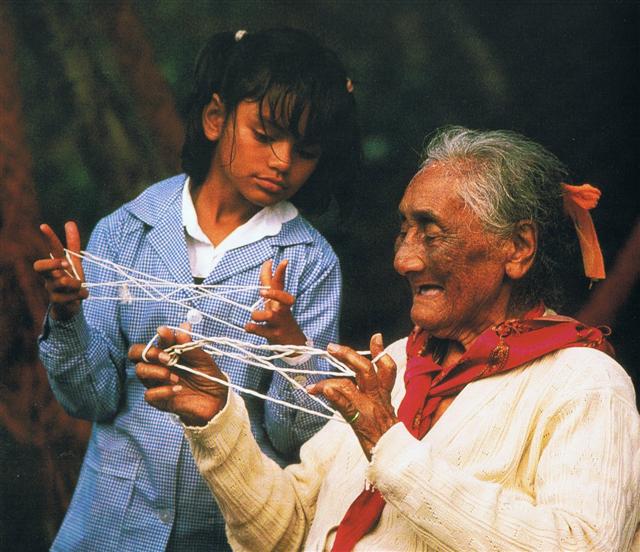A dry season could be depicted in Ca1-20, a dry and infertile 'earth' (henua) in contrast to the preceding kihikihi season:
And 11 * 9 (at Ca1-19) = 99 could allude to the 99 lunations, and therefore to Venus, the planet who rules life (and death): ... The Mayas feared Venus. I guess she dominated time too much for comfort. It is extraordinary how her behaviour evidently is ruling events. 'After five complete cycles totaling 2,920 days, the movement of Venus fill eight idealized years of 365 days each and come within hours of spanning 99 lunations.' (Popol Vuh) 8 * 365 = 5 * 584 = 2920 days, and 99 * 29.5 = 2920½. Thus 5 Venus cycles are joined to 8 Earth years in a way similar to how 7 'Sun flames' are joined to 6 'Moon flames'. And 99 Moon cycles are also joined to 5 Venus cycles (and to 8 Earth years):
Interesting is then the fact that the key date April 10 - day 100 in the Gregorian calendar - corresponds to manzil day 329. 100 + 365 - 136 = 329. Gregorian day 329 (which remarkedly corresponds to manzil day 193) was when Antares rose heliacally, in October 10, to announce the summer ahead on Easter Island. When Earth is too dry she is infertile and famine threatens, but when there is enough fresh water there will be crops ahead. Metoro could have expressed such an idea with his te maitaki, the 'good' (time):
Mother Earth - personified as Virgo - could be seen close to the full (pregnant) Moon. Ana-roto (Spica) promised offspring. Ki roto ki = to enter (copulation). Haka-raoa is in a way the opposite to maitaki - not possible to eat anything:
The dry element in front in Ca1-21 cannot be a dry branch, because such must in the idiom of rongorongo pictures be broader than a string figure. A fish-bone would be a more acceptable explanation. The month 'April' (October) was named Tagaroa uri on Easter Island:
At the end of March the Great Fish of winter (Cetus) had run up onto land and his body would quickly be devoured, leaving only a skeleton (fish-bone):
"There once lived a couple ... And the wife conceived a hatred to him, and she was flying from him through woods and wilderness; and he continued to follow her constantly. And one day that the woman came to the sea shore of Camas, ... she met a skeleton of a whale on the strand, and she heard the sounds of the wind passing through the sinews of the whale on the strand, and she fell asleep from the sounds. And her husband came after her; and he perceived that it was from the sounds the sleep fell upon her. And he then went forward into the wood, and made the form of a Cruit [Irish harp], and he put strings from the sinews of the whale into it; and that was the first Cruit that was ever made." (Hamlet's Mill) The creatures of nature as a rule have bilateral symmetry and the 'fish-bone' in Ca1-20 has one limb (rib) missing in front. It could have disappeared into someone's throat. In April there certainly was much eating of fishes because the fishing taboo was over. North of the equator winter was over and instead of a low sky (season of fish) the colourful birds would return a-lighting (in) the trees.
In the far north when Sun returned it was forbidden to play string games - this would make him hesitate if the time really was ripe for his return. String figures are dangerous in early spring. Sun could be magically snared and there would be no food, no eating (kai). I think this was the reason string games were called kaikai (no eating) on Easter Island. In April (or maybe in October) the threat was over and it was time for festivities. "... string games could be resumed after it was clear that the Sun had managed to leave the horizon and was rapidly gaining in altitude: 'Before the sun starts to leave the horizon ... when it shows only on the horizon, ... then string games were no longer allowed as they might lacerate the sun. Once the sun had started to go higher and could be seen in its entirety, string games could be resumed, if one so wished. So the restriction on playing string games was only applicable during the period between the sun's return and its rising fully above the horizon ..." (John MacDonald, The Arctic Sky. Inuit Astronomy, Star Lore, and Legend.)
"The late Amelia Tepano Ika was a beloved link with the past, a much sought-after teacher of the art of kaikai, string figures made and presented with accompanying chants." (Jo Anne Van Tilburg, Easter Island. Archeology, Ecology and Culture.) | |||||||||||||||||||||||||||||||||||||||||||||




